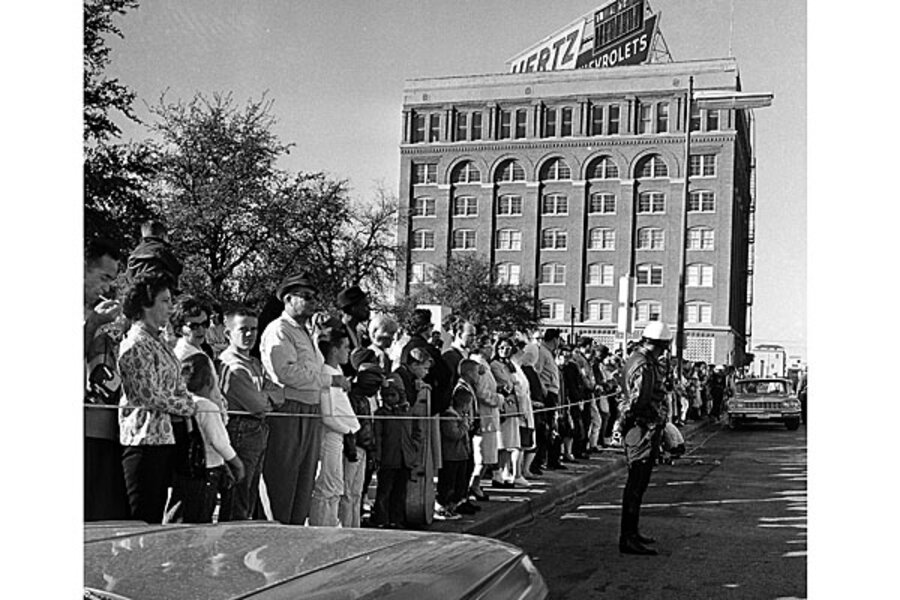John F. Kennedy assassination: Did the Secret Service agent do it?
Loading...
| Beverly Hills, Calif.
Weeks before the 50th anniversary of President John F. Kennedy's assassination this fall, a TV network will take another look at the killing in a docudrama that suggests a Secret Service agent accidentally fired one of the bullets that felled Kennedy.
ReelzChannel's "JFK: The Smoking Gun" is based on the work of retired Australian police Detective Colin McLaren and the book "Mortal Error: The Shot that Killed JFK" by Bonar Menninger.
McLaren spent four years combing through evidence from Kennedy's death on Nov. 22, 1963, in Dallas. He and Menninger also relied on ballistics evidence from an earlier book by Howard Donahue.
The two-hour docudrama airs Nov. 3 in the U.S., Canada and Australia. It suggests that agent George Hickey fired one of the bullets that hit Kennedy. Hickey, who is now dead, was riding in the car behind Kennedy's limo that day.
"What we're saying is that we believe it was a tragic accident in the heat of that moment," McLaren told the Television Critics Association on Sunday.
When Lee Harvey Oswald fired his first shot, McLaren said Hickey responded by trying to fire back on Oswald's position using his Secret Service-issued rifle. But because he was inexperienced with the weapon and the car lurched forward, McLaren said the shot went awry and accidentally hit Kennedy, who was struck in the neck but quite possibly not fatally wounded by Oswald's second shot.
"We don't suggest that he was in any way involved in a conspiracy," McLaren said of Hickey.
The Warren Commission report in the 1960s concluded that Oswald was the lone gunman in officially explaining the assassination.
And here's what Hickey said happened:
'At the end of the last report I reached to the bottom of the car and picked up the AR 15 rifle, cocked and loaded it, and turned to the rear.
'At this point the cars were passing under the over-pass and as a result we had left the scene of the shooting. I kept the AR 15 rifle ready as we proceeded at a high rate of speed to the hospital.'
After Menninger's book was published in 1992 – making a similar claim about Hickey – he sued Menninger in 1995. But a judge ruled that the statute of limitations had run out.
The show's producers say that advances in forensic science and documents released during the Clinton administration have added credibility to Menninger's theory.
"Our documentary is going to be the only one that has opened the case forensically and looked at the evidence from the beginning and examined everything that happened that day in Dealey Plaza," Michael Prupas, the film's executive director, said, according to the Huffington Post.
The program is ReelzChannel's second Kennedy-related offering. In 2011, the cable channel aired "The Kennedys" after History Channel dropped the miniseries amid reports that the real-life Kennedy family was unhappy about the project.
Copyright 2013 The Associated Press.





